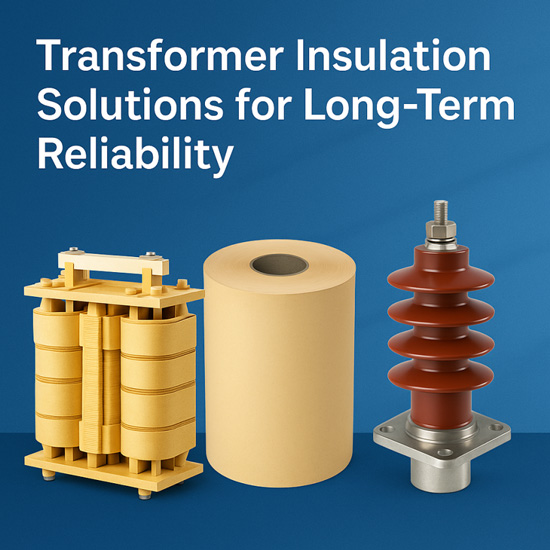Transformer insulation plays a critical role in ensuring the long-term performance, safety, and efficiency of power transformers. As grid demands increase and asset lifespans extend, selecting the right insulation solution has become more important than ever—especially under thermal, electrical, and environmental stress.

Today’s buyers and engineers prioritize insulation systems that provide durability, thermal stability, and operational safety. Below are key components and features that define a high-performance transformer insulation solution:
1. Material Selection
High-grade insulating materials such as oil-impregnated paper, epoxy resin, Nomex®, or thermally upgraded kraft are engineered to withstand electrical stress and aging. For dry-type transformers, cast resin and vacuum pressure impregnated (VPI) systems are widely used.
2. Thermal Class & Aging Resistance
Insulation materials rated for Class A (105°C), B (130°C), F (155°C), or H (180°C) support different thermal performance needs. Advanced solutions extend insulation life even under fluctuating load and temperature cycles.
3. Moisture and Contamination Control
Moisture is a major factor in insulation degradation. Modern insulation systems include barriers and sealants to reduce moisture ingress and partial discharge risk.
4. Mechanical and Dielectric Strength
Insulation must withstand mechanical forces during transportation and operation, as well as high dielectric stress. Precision-engineered spacers, barriers, and bushings help maintain dielectric integrity.
5. Customization for Application
Whether for power transformers, distribution units, reactors, or special-purpose designs, tailored insulation kits ensure compatibility with geometry, voltage class, and cooling methods (ONAN, ONAF, etc.).
Oil-immersed power transformers (HV/MV)
Dry-type distribution transformers
Cast resin and VPI transformers in industrial settings
Renewable energy systems and offshore transformers
Traction and converter transformers
Poor insulation is one of the top failure points in transformer operations. High-quality insulation reduces downtime, improves overload handling, and extends service life—making it a cost-effective investment for asset managers and OEMs.